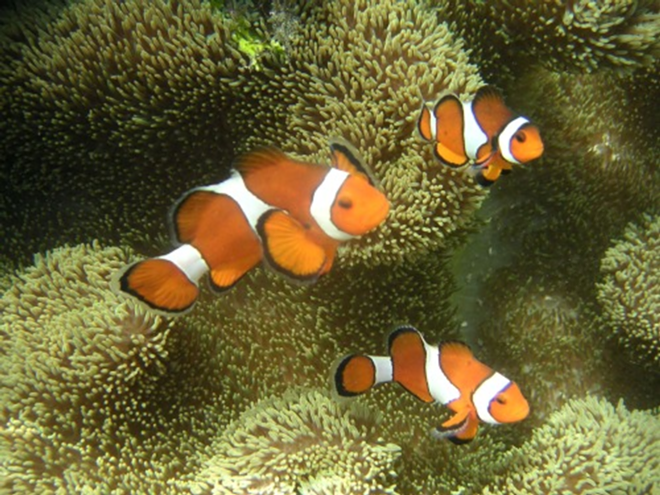

- Metatron
- The ocellaris clownfish, a popular aquarium fish often captured after first being stunned by bursts of cyanide-laced seawater squirted from a plastic bottle.
Courtesy of: EarthTalk®
E — The Environmental Magazine
Dear EarthTalk: I heard of a practice called cyanide fishing, which is used mostly to collect aquarium specimens, but I understand it is also used to catch fish we eat. Isn’t this very unhealthy? — Phil Seymour, Albany, NY
Cyanide fishing, whereby divers crush cyanide tablets into plastic squirt bottles of sea water and puff the solution to stun and capture live coral reef fish, is widely practiced throughout Southeast Asia despite being illegal in most countries of the region. The practice began in the 1960s in the Philippines as a way to capture live reef fish for sale primarily to European and North American aquarium owners—a market now worth some $200 million a year.
But today the technique is also used to supply specialty restaurants in Hong Kong and other large Asian cities. There high roller customers can choose which live fish they want prepared on the spot for their dinner at a cost of up to $300 per plate in what the non-profit World Resources Institute (WRI) calls “an essential status symbol for major celebrations and business occasions.” WRI adds that as the East Asian economy has boomed in recent decades, live reef food fish has become a trade worth $1 billion annually.

